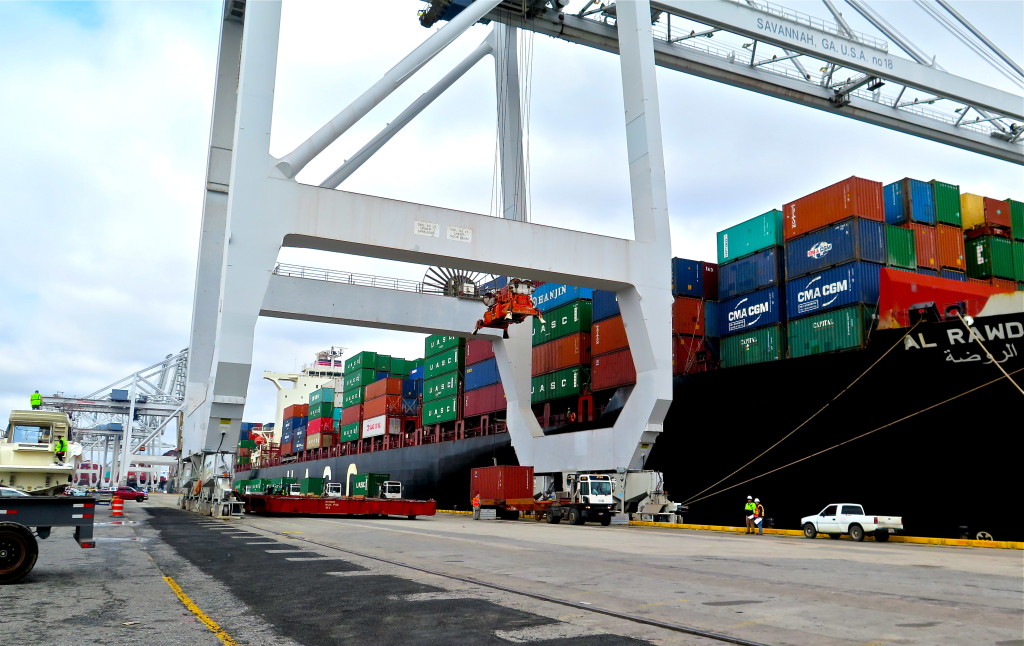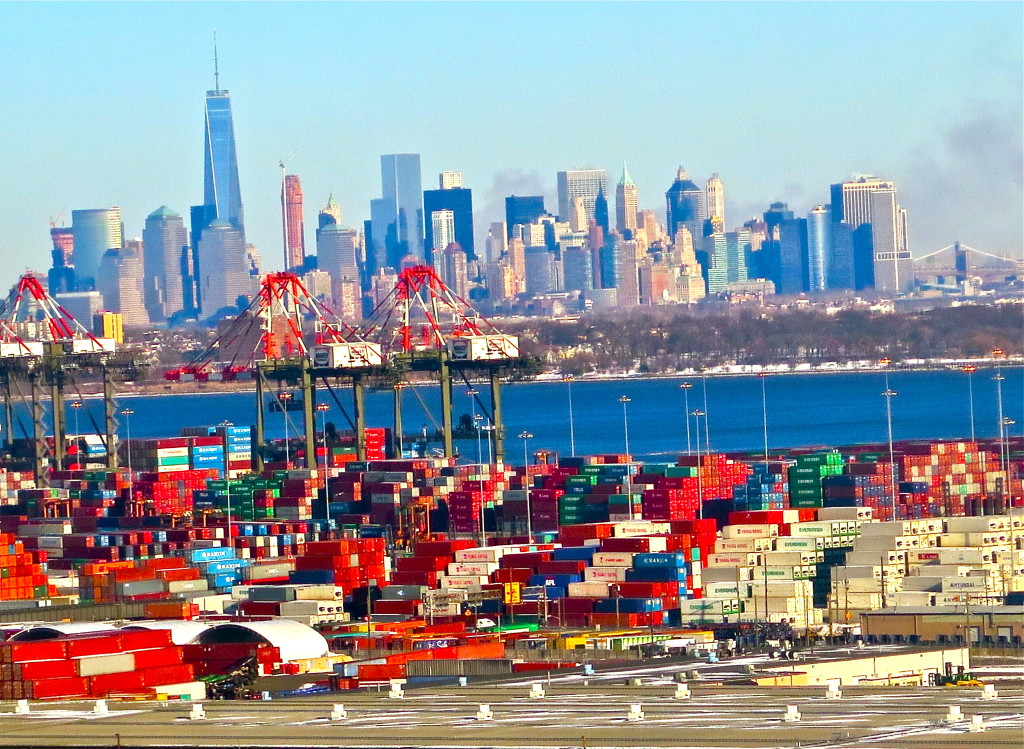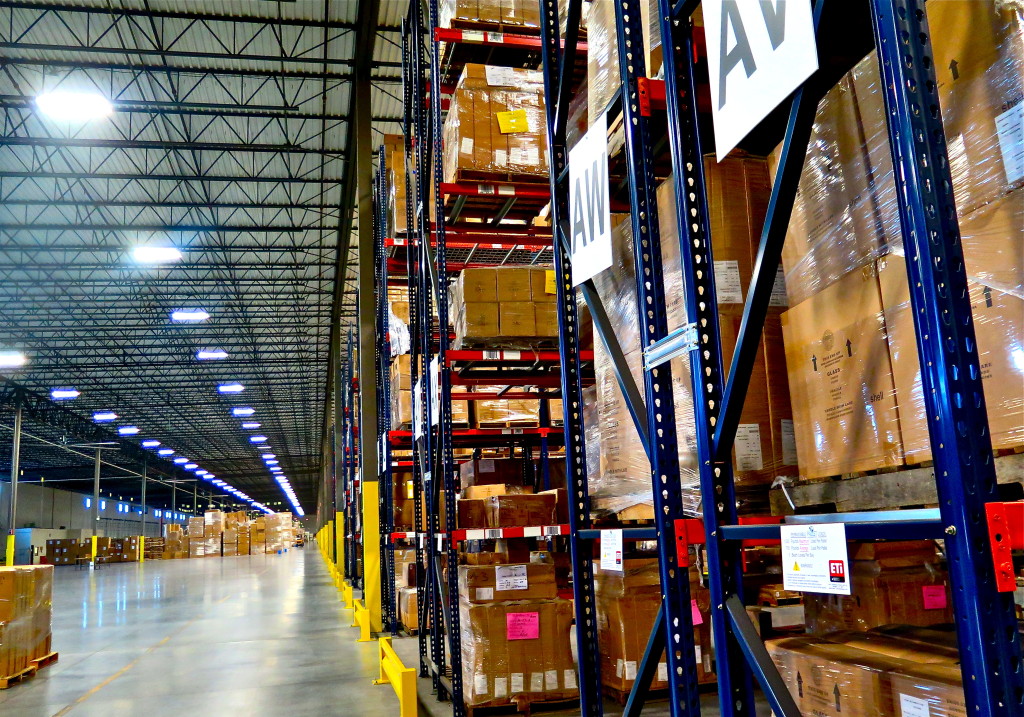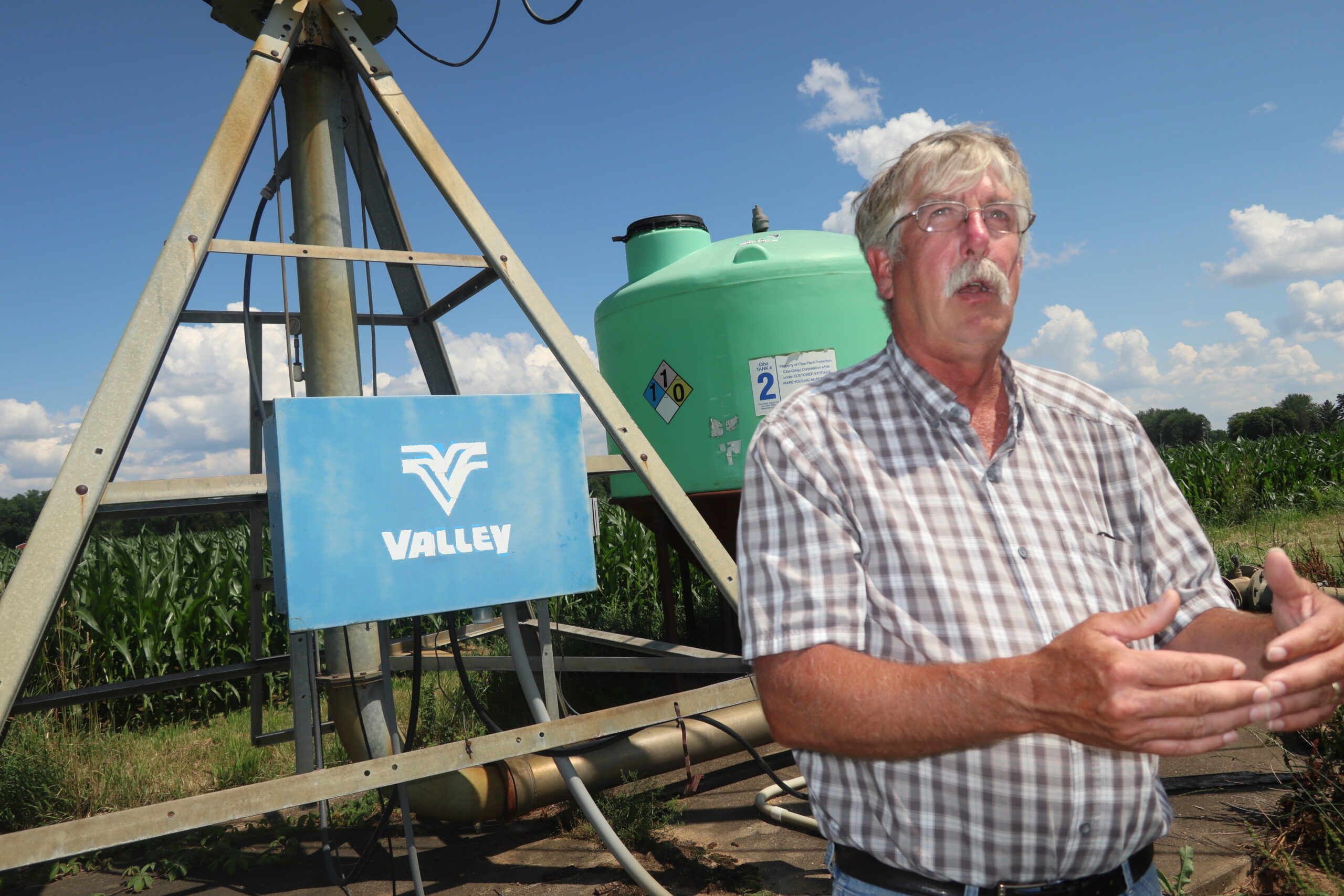
SAVANNAH, Ga. — There’s not much about water infrastructure that gets America’s lawmakers excited these days unless it’s a big coastal port.
The New York/New Jersey port, with a big assist from the federal government, is spending $1.3 billion to lift the 84-year-old Bayonne Bridge high enough to allow a new generation of super-sized cargo vessels to pass underneath. Charleston, S.C., with state and federal support, is spending $2 billion to deepen the harbor and expand port facilities. Miami has a project of comparable size to do the same thing.
Here in Savannah, where ocean-going ships have arrived and departed since the city was founded in 1733, Georgia and its Congressional delegation collaborated to direct $758 million over the last decade to expand and modernize the nation’s fourth largest container port. Over the next decade, say port executives, an additional $1.4 billion is in the port’s capital budget, including $706 million to deepen the harbor and the Savannah River.
In all, spending on capital improvements to U.S. ports has averaged $10 billion annually over the last decade, according to a 2014 study of infrastructure investment by PricewaterhouseCoopers. By 2025, U.S. port capital investments are projected to reach $20 billion annually, the study concludes.
In contrast, U.S. capital investments in water supply and wastewater treatment totaled around $2 billion annually over the last decade. By 2025, investments in water supply and treatment may reach $3 billion annually, says PricewaterhouseCoopers.
Uneven Funding
The mismatch in spending is reflected in two essential metrics that are clearly apparent in Savannah. The Garden City container terminal, with its new electric cranes, redesigned loading deck traffic patterns, and expanded intermodal train facilities, is a showcase marine import and export installation. The decade of investment in equipment and practices by Georgia and the federal government, which came in anticipation of handling more cargo from the expanded Panama Canal, has resulted in hundreds of new jobs at the terminal, and thousands more inside the 45 million square feet of logistics, storage, and distribution centers that surround the port.
In the meantime scant investment in water quality infrastructure has left the Savannah River dirtier than ever. The most recent EPA Toxics Release Inventory, for instance, finds that only two other rivers — the Ohio River and the New River in West Virginia — have more hazardous chemicals being poured into them than the Savannah River.
It’s easy for port executives and lawmakers who hold the public purse strings to make the case that capital investments in maritime infrastructure are a competitive advantage that lead to more economic activity and jobs. The evolution of ocean transport is the story of the ever increasing size and speed of the global maritime fleet. Ports that can’t serve the 1,100-foot container, cargo, and tanker ships plying the world’s oceans will die pretty quickly.
Apparently, coastal state Legislatures and Congress find no such certainty in the economic value of clean water. The frustrating consequences are twofold. First is that the improvement in the quality of the nation’s waters that the U.S. experienced in the first three decades after the Clean Water Act was enacted in 1972 has largely stopped. And second, in too many regions to count, water quality is deteriorating.
More sewage from old and inadequate wastewater treatment plants is pouring into rivers. Summer beach closures, caused by fecal contamination, are endemic in the United States. The most recent EPA report on the condition of coastal waters found plenty of foul streams, rivers, lakes, and harbors, and nothing to cheer about. Rivers today are regularly contaminated by big chemical, sewage, and oil spills. Lake Erie is so polluted by phosphorous, giving rise to toxic algae, that Toledo last year was forced to shut down its drinking water plant, which supplies 400,000 residents.
The nation’s waters are in perilous circumstances. Along with rising levels of contamination, droughts are drying up surface water supplies in Texas, California, and the Great Plains. At the same time, ground water levels are receding from California to the Midwest.
Very clearly, more expansion and modernization in America’s water supply and treatment infrastructure is warranted. The economic damage to agriculture, manufacturing, energy production, and metropolitan economies are in the balance.
Unfortunately, the new era of more scarce water supplies and more intense water contamination is advancing at the speed of grinding tectonic plates. The new era has no deadline to motivate more investment, like the competition to handle the additional cargo that will start to flow through the Panama Canal next year. The growing number of seismic hydrological events — the California and Texas droughts, the Lake Erie poison algae, big spills in West Virginia and North Carolina — have prompted comparatively modest regional, state, and national responses. Water problems just don’t generate the level of public clamor, for instance, that greeted Miley Cyrus’ 2013 introduction of twerking to a national audience.
At one time, during the 1970s and 1980s, Americans called for cleaner supplies of fresh water and the national government footed most of the bill for new sewage treatment plants. Through the construction grants program, U.S. taxpayers provided $US 60 billion ($180 billion in 2015 dollars) for new facilities. At its 1977 peak, more than 70 percent of all capital spending for drinking water and sewage infrastructure came from Washington, D.C., according to the Congressional Budget Office.
The grant program was phased out by 1990 and replaced with a smaller loan program. By 2010, the federal government’s share of capital spending for water infrastructure dropped to just one-sixth of total investment, or a 20-year investment of $US 8 billion. State and local sources during those two decades contributed $US 38 billion. Including operations and maintenance budgets, state and local agencies account for 95 percent of spending on water infrastructure, according to the U.S. Conference of Mayors.
In the era of austerity that has bound public investment for two decades, reaching up to the level of spending required depends on a huge change in social values and policy direction.
Undoubtedly, at some point America’s slipping water supply and quality will focus the nation’s attention. And when it does, the picture will be painful and more expensive. According to a new report by the Columbia Water Center, the latest evaluation of the condition of America’s water infrastructure, it will cost “from $1 to $2 trillion over the next 2 decades to replace aging water infrastructure; but today, the all-but-free cost of water to users doesn’t even cover transportation, let alone processing and infrastructure maintenance.”
In other words, fixing much of the problem requires an investment of $100 billion annually by cities, states, the federal government, and water users. That’s a pittance — about half of one percent of GDP; three pennies out of $5 — in a nation with a $16 trillion gross domestic product. It’s $20 billion a year less than what the U.S. now spends each year to repair and modernize the nation’s roads, bridges, airports, rail networks, and ports, according to the PricewaterhouseCoopers study. It’s spending that is worth every penny.
— Keith Schneider





